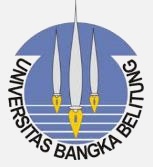Exploring Teachers’ Questioning Strategies in an EFL Classroom Interaction: A Case Study of A Vocational High School
DOI:
https://doi.org/10.33019/berumpun.v5i2.96Keywords:
Classroom Interaction, teacher, questioning strategiesAbstract
Teachers have a vital role in facilitating students' learning journeys. Therefore, they must carefully select and employ effective techniques during their instructional sessions. Among these techniques, questioning stands out as a particularly influential method. This study focuses on exploring the utilization of questioning strategies by English teachers in the context of EFL (English as a Foreign Language) classroom interactions within Vocational High Schools. The research adopts a case study approach, centering around one EFL teacher as the participant. Data collection involved interviews and observations, while Miles and Huberman's qualitative data analysis framework was applied for data interpretation. The findings of this study indicate that, among the four question types outlined in Wangru's (2016), the teacher predominantly employs two strategies during classroom interactions: prompting and repeating. In contrast, probing and redirecting strategies are used less frequently. The questions posed by the teacher cover a range of topics, including material-related inquiries and those aimed at eliciting student responses. Consequently, students engage actively in the learning process, leading to skill enhancement. In conclusion, this research demonstrates that effective employment of questioning strategies contributes to an interactive learning environment.
Downloads
References
[2] Braun, V., & Clarke, V. (2006). Using thematic analysis in psychology. January. https://doi.org/10.1191/1478088706qp063oa
[3] Brown, H. Douglas. (2007). Principles of Language Learning and Teaching, Fifth Edition. New York: Pearson Education
[4] Boyd, M. P. (2015). Relations between teacher questioning and student talk in one elementary ELL classroom. RELC Journal, 47(3), 370- 404. DOI: 10.1177/1086296X16632451.
[5] Chin, Christine. (2004). Questioning Students in ways that encourage thinking. Australian Science Teacher Association, 50(4), 16-21. https://search.informit.org/doi/10.3316/aeipt.140743
[6] Chin, Christine. (2007). Teacher Questioning in Science Classrooms: Approaches that Stimulate Productive Thinking. Journal of Research in Science Teaching, 44(6), 815-843. DOI 10.1002/tea.20171
[7] Critelli, A., & Tritapoe, B. (2010). Effective Questioning Techniques to Increase Class Participation. Journal of Student Research, 2(1), 1-7
[8] Erianti, Ayu. (2017). An Analysis of Teachers’ Questioning Strategies in ELT (English Language Teaching): The Classroom Interaction at Eleventh Grade SMA Muhammadiyah 1 UNISMUH Makassar.Thesis, English Education Department Faculty of Teacher Training and Education, Makassar Muhammadiyah University
[9] Karjo, Clara Herlina. (2011). Teachers’ and Learners’ Accounts of Teaching Learning Strategies in Multi Channel Learning System. CONAPLIN Journal, 1(1), 116–128.
[10] Koole, T. (2015). Classroom Interaction. In K. Tracy (Ed.), International Encyclopedia of Language and Social Interaction Wiley-Blackwell. https://doi.org/10.1002/9781118611463.wbielsi092
[11] Lynch, Tony. (1991). Questioning roles in the classroom. ELT Journal, 45(3), 201-210.
[12] Mamik. (2015). Metodologi Kualitatif. Sidoarjo: Zifatama Publisher
[13] Mu'in, F., Arini, D., & Amrina, R. (2018). Language in Oral Production Perspectives. Bandung: CV Rasi Terbit
[14] Moser, A. & Korstjens, I. (2018). Series: Practical guidance to qualitative research. Part 3: Sampling, data collection and analysis. European Journal of General Practice. 24(1), 9-18. DOI: 10.1080/13814788.2017.1375091
[15] Nashruddin, N. & Ningtyas, Putri R. (2020). English as Foreign Language (EFL) Teacher’s Questioning Strategies in Classroom Interaction. The journal of Ultimate Research and Trends in Education, 2(1), 5-11. https://journal.unilak.ac.id/index.php/UTAMAX/
[16] Qasoha, Hasan S. (2012). Effects of Teacher Question Types and Syntactic Structures on EFL Classroom Interaction. The International Journal of Social Science, 7(1). 52-62
[17] Richards ,Jack C., & Schmidt, Richard. (2010). Longman Dictionary of Language Teaching and Applied Linguistics (ed. 4). Edinburgh: Pearson Education Limited
[18] Sari, Shirley P. (2014). Teacher’s Questioning Strategies in Teaching English in SMP Pangudi Luhur Salatiga. Thesis, English Department Faculty of Language and Literature Satya Wacana Christian University Salatiga
[19] Sasikumar, N. (2014). Impact of Active Learning Strategies to Enhance Student Performance. Innovare Journal of Education, 1(1), 1-3
[20] Sujariati, Rahman Q. & Mahmud M. (2016). English Teacher’s Questioning Strategies in EFL Classroom at SMAN 1 Bontomarannu. ELT Worldwide, 3(1), 107-121.
[21] Sulistiawati, Anggun D. (2022). An Analysis of Teacher’s Questioning Strategies During The Classroom Interaction Covid-19 Pandemic at MTS N 01 Bengkulu Utara. Thesis, English Education Study Program Tarbiyah and Tadris Faculty, UIN Fatmawati Sukarno Bengkulu
[22] Sun, Zuosheng. (2012). An Empirical Study on New Teacher-student Relationship and Questioning Strategies in ESL Classroom. English Language Teaching, 5(7), 175-183. doi:10.5539/elt.v5n7p175
[23] Syafrizal, & Rohmawati, C. (2017). Teacher’s Speaking Strategies at Vocational High School. The Journal of English Language Studies, 2(1), 66-83
[24] Tsui, Amy.B.M. (2001). Classroom Interaction. In R. Carter & D. Nunan, The Cambridge guide to teaching English to speakers of other languages (pp.120-125). Cambridge University Press
[25] Wangru, Cao. (2016). The Research on Strategies of College English Teachers Classroom Questioning. International Education Studies, 9(8), 144-158. doi:10.5539/ies.v9n8p144
[26] Wilen, W. W. (1991). Questioning Skills, for Teachers. National Education Association of the United States
[27] Yanita, F., Yusuf, Y. Q., & Gani, S. A. (2016). “Oke, Any Questions?” The Questioning Interaction in an EFL Classroom. Proceedings of The 6th Annual International Conference Syiah Kuala University (AIC Unsyiah) in conjunction with The 12th International Conference on Mathematics, Statistic and Its Application (ICMSA), 328-333
[28] Yin, Robert K. (2003). Case Study Research Design and Methods Third Edition. America: Sage Publications



